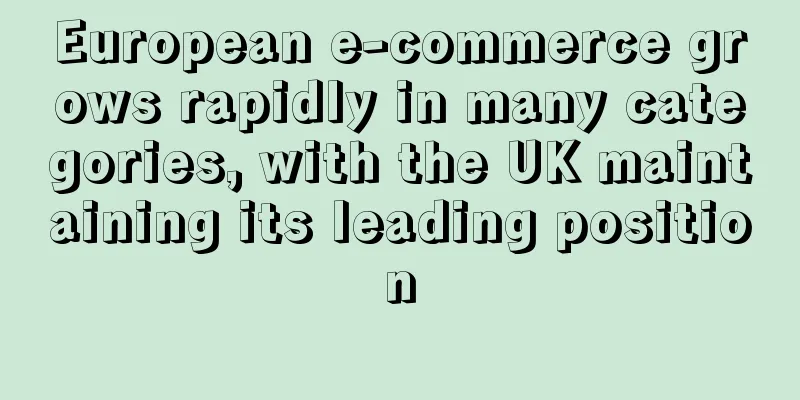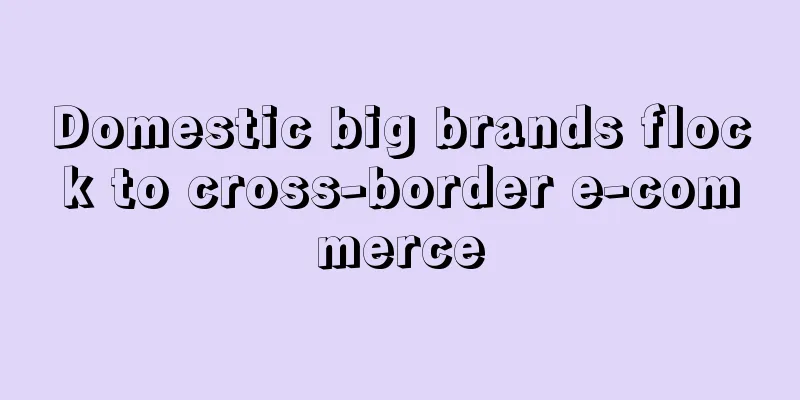European e-commerce grows rapidly in many categories, with the UK maintaining its leading position

|
Recently, ystats.com conducted a survey and summary of the European e-commerce market since the outbreak of the epidemic. The results show that since the outbreak of the epidemic, the retail market has undergone major changes, and more and more retailers and companies have begun to sell online and increase their investment in e-commerce.
Data shows that the sales of Europe's top online retailers achieved a year-on-year growth of about 40% in 2020. Among them, the UK maintained its leading position in the whole of Europe, with a growth rate of more than 30%, and is expected to account for nearly one-third in 2021, ranking third in the world.
Germany, another developed market, saw its B2C e-commerce market grow by more than 20% year-on-year in 2020 , and is expected to rank sixth in the global ranking in 2021. Although the growth was not as large as that of other Western European neighbors , Spain's B2C e-commerce value peaked in the fourth quarter of 2020. In addition, a large part of Spain's overall e-commerce sales comes from transactions from Spain to abroad.
From a category perspective, hardware , food , beverages , health and beauty product categories experienced the fastest year-on-year growth . Overall, in most European markets, clothing, shoes and accessories, and electronics are usually listed as the most popular online shopping categories. However, specific preferences vary by country and region.
In the UK, more than half of respondents on average bought clothing, shoes and accessories . However, in Germany, the fashion and accessories segment fell to second place, with electronics taking the top spot , accounting for about a quarter of online sales. The top three most popular categories in Spain were technology /communications, entertainment/culture and food.
In Russia, preferences for product segments vary by purchase type. When shopping locally online, consumers prefer electronics, with clothing and footwear being the second choice, while when making cross-border purchases, clothing and footwear dominate, with the share of consumer electronics declining.
There are many European markets, but the main ones are the United Kingdom, Germany, France and other countries. Sellers can pay more attention to local developments. Europe U.K. E-commerce |
>>: Canada Railway Strike, Railway Services Suspended in Many Places
Recommend
The $258 billion children's clothing market has another big brand going public
Whether online or offline, clothing is a very sta...
With the rise of social e-commerce, Webuy is competing in Southeast Asia!
Subsequently, Webuy ’s social influence was quick...
What is ZaloPay? ZaloPay Review, Features
ZaloPay is an e-wallet for online payments on mob...
Japan's retail sales rise for two consecutive months, but Omicron risks loom...
According to foreign media reports , Japan's ...
What is Plae? Plae Review, Features
Plae is a technology-driven children's lifest...
800 orders a day in one month after opening the store! SHEIN sellers are running wild
In the past year, the cross-border e-commerce ind...
What is Cross-border Communication? Cross-border Communication Review, Features
Cross-border e-commerce (Shanghai Cross-border e-c...
The valuation will reach 3 billion, and the "kids version of SHEIN" plans to IPO
The United States is the world's largest chil...
Import volume of health functional foods increased by 16%! The South Korean government will strictly regulate
According to a survey, the COVID-19 pandemic spre...
Zhejiang Dama's net profit cut in half in 2024
Zhejiang's big seller, which is keen on setti...
South Korean IT giant Kakao joins the e-commerce market and is about to launch the e-commerce platform Kakao Store
According to the Korea Economic Daily, South Kore...
Another Amazon blockbuster is heading for IPO!
Xiangjiang Electric , a small appliance seller on...
Sales reached 4.2 trillion won! Cereals and yogurts as breakfast substitutes are gaining attention in Korea
Breakfast is an important meal and is indispensab...
What is WI Harper Group? WI Harper Group Review, Features
WI Harper Group is one of the earliest venture ca...
Another top seller connected to ChatGPT, and many AI tools became popular
The enthusiasm of the cross-border circle for Cha...









